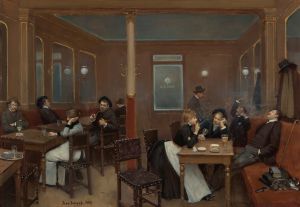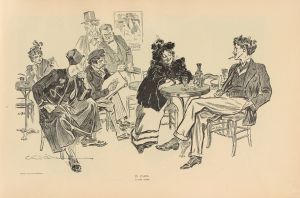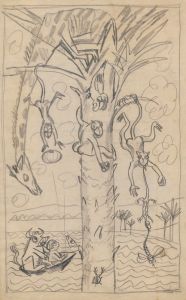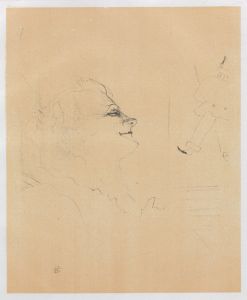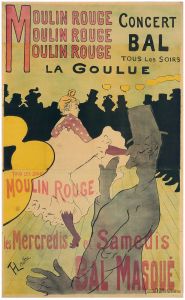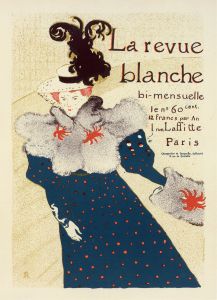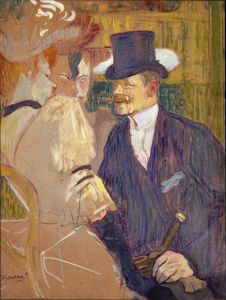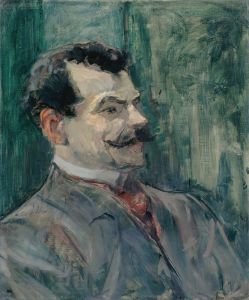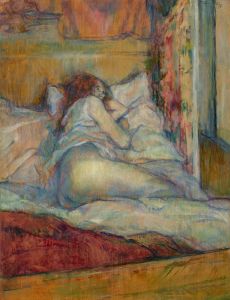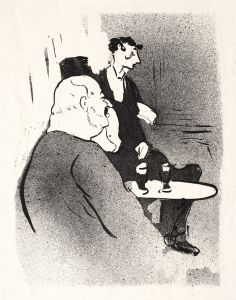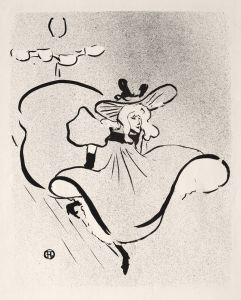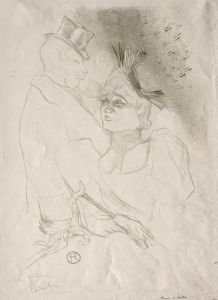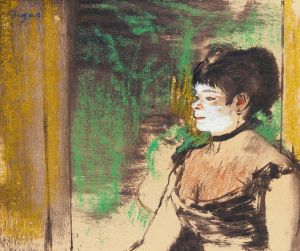
Piocheur, Plongeur
A hand-painted replica of Henri de Toulouse-Lautrec’s masterpiece Piocheur, Plongeur, meticulously crafted by professional artists to capture the true essence of the original. Each piece is created with museum-quality canvas and rare mineral pigments, carefully painted by experienced artists with delicate brushstrokes and rich, layered colors to perfectly recreate the texture of the original artwork. Unlike machine-printed reproductions, this hand-painted version brings the painting to life, infused with the artist’s emotions and skill in every stroke. Whether for personal collection or home decoration, it instantly elevates the artistic atmosphere of any space.
Henri de Toulouse-Lautrec, a prominent French painter, printmaker, and illustrator, is renowned for his depictions of Parisian nightlife in the late 19th century. Among his numerous works, "Piocheur, Plongeur" stands out as a significant piece, though it is less widely known compared to his other masterpieces.
"Piocheur, Plongeur," which translates to "Digger, Diver," was created during a period when Toulouse-Lautrec was deeply immersed in capturing the essence of everyday life and the working class in Paris. This painting is a testament to his keen observation skills and his ability to portray the human condition with both empathy and realism.
The artwork features two central figures engaged in laborious activities. The "piocheur" (digger) is depicted with a pickaxe, suggesting a scene of manual labor, possibly in construction or mining. The "plongeur" (diver) is shown in a position that implies diving or intense physical effort, though the exact nature of his task is open to interpretation. Toulouse-Lautrec's use of bold lines and dynamic composition brings a sense of movement and vitality to the scene, emphasizing the strenuous nature of the work.
Toulouse-Lautrec's style in "Piocheur, Plongeur" is characteristic of his broader oeuvre, marked by a blend of Impressionist and Post-Impressionist influences. His technique often involved the use of vivid colors and expressive brushstrokes, which can be seen in the way he captures the textures and forms of the figures. The painting also reflects his interest in Japanese prints, which influenced his approach to composition and perspective.
The context of "Piocheur, Plongeur" is rooted in the socio-economic environment of late 19th century Paris. During this time, the city was undergoing significant industrial and urban development, leading to a rise in the working-class population. Toulouse-Lautrec's choice to depict laborers highlights his commitment to representing all facets of society, not just the glamorous nightlife for which he is most famous.
Henri de Toulouse-Lautrec was born into an aristocratic family in 1864, but his life was marked by physical ailments and a penchant for bohemian living. Despite his noble background, he was drawn to the underbelly of Parisian society, frequenting cabarets, brothels, and dance halls. This exposure to diverse social strata informed his artistic practice, allowing him to portray a wide range of human experiences with authenticity and sensitivity.
"Piocheur, Plongeur" is a valuable piece within Toulouse-Lautrec's body of work, offering insight into his artistic vision and his ability to capture the dignity and hardship of labor. While it may not be as celebrated as his depictions of the Moulin Rouge or his portraits of performers, it remains an important example of his dedication to portraying the breadth of human life.
In summary, "Piocheur, Plongeur" by Henri de Toulouse-Lautrec is a significant yet lesser-known painting that exemplifies the artist's skill in capturing the essence of everyday labor and the working class in late 19th century Paris. Through his distinctive style and empathetic portrayal, Toulouse-Lautrec provides a poignant glimpse into the lives of those who contributed to the city's industrial and urban transformation.





